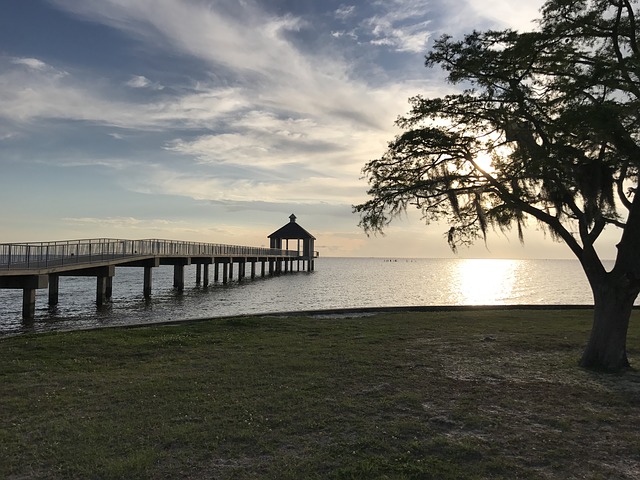Apply now to join our next cohort of Community Science Fellows and Community Leads!

Image from pixabay.com
The state of Louisiana and the Army Corps of Engineers have proposed the “Mid-Barataria Sediment Diversion” project, which will divert part of the Mississippi River through New Orleans to Plaquemines Parish, Louisiana. While the divergence is necessary to rebuild lost coastline, it will cause major disruptions to the local fishing community.
Plaquemines Parrish, home to Asian and African American fishing communities, suffers devastating floods with even the slightest rise in storm surges. As climate change continues to drive rising sea levels and more intense and frequent hurricanes, rural communities living on the coast must fight a loss of coastline, disruptions to utility services, and constant struggles to maintain their livelihoods.
In order to address this issue and help restore coastal land areas, the state of Louisiana and the Army Corps of Engineers have developed a plan to divert the Mississippi River and its sediment to restore lost coastal land. As with all large projects, there are impacts that will have negative effects. For local fishing communities, this impact will manifest in the loss of the entire oyster crop and brown shrimp. Louisiana is the leading oyster producing state in the U.S., which contributes $35 million worth of dockside value. White and brown shrimp are the backbone of a $2 billion shrimp industry in Louisiana, but the divergence project will destroy the habitat of brown shrimp.
The Coastal Community Consulting, Inc., a 501 c 3 dedicated to the concerns and needs of fisherman in and around Plaquemines Parrish, seeks assistance in addressing concerns surrounding the Divergence Project. Specifically, they hope to understand how the sediment diversion will affect the oysters and shrimp fisherman rely on to make a living. If fisherman can continue to provide a living for themselves and their families based on the new species that will thrive in the new aquatic environment, the disruption to their lives will be minimized. If not, plans must be developed to provide options for the people in these communities to continue to survive.
In collaboration with the Community and College Partners Program (C2P2), this Thriving Earth Exchange project has three main goals: (1) understand how the sediment divergence project will affect the current oyster and shrimp populations that sustain fisherman today, (2) characterize the species that will be viable for fishing after the completion of the divergence project, and (3) develop a comprehensive management plan that details how the fishing community should respond to the divergence impacts.
The Mississippi Divergence project will occur, and the local communities understand the need for a sediment diversion that will protect their coastline. Ultimately, we hope to provide the community with a better understanding of the project’s impact on their homes and livelihoods that will allow them to make more informed decisions for their families and community.
Project outputs should include:
Fall 2021
Spring 2022
Fall 2022
Sandy Nguyen – Executive Director of Coastal Communities Consulting, Inc.
Dr. Stephanie Smallegan – Assistant Professor at the University of South Alabama
Dr. Monica Barra – Assistant Professor at the University of South Carolina
Mike Burns – Executive Director of Community and College Partners Program
Lienne Sethna – Thriving Earth Exchange Community Science Fellow
Community and College Partners Program (C2P2)
Environmental Defense Fund
(c) 2024 Thriving Earth Exchange